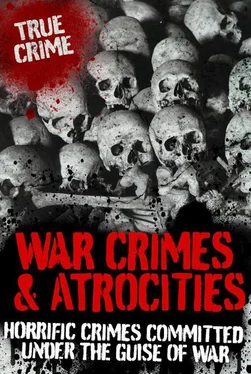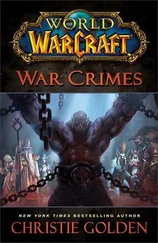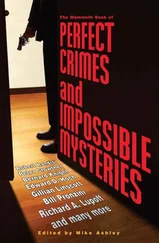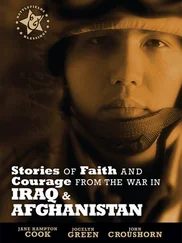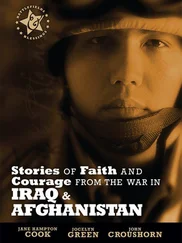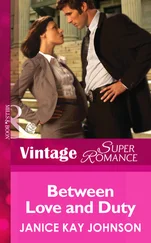Unsure of what was ahead of them, Charlie Company had been given the order to ‘search and destroy’. There were reports that all the civilians had left the village and that the remaining people were either Vietcong or their sympathizers.
As they entered the village, Calley gave the instruction to his men to go in firing, even though they were met with no opposing fire. In the carnage that followed, old men were bayoneted, women and children, including babies, were shot in the back of the head and several young girls were gang raped before being killed. Soldiers went beserk, showing no mercy, even to the families that were huddled together in their huts. The Vietnamese, who tried to show a sign of respect to the soldiers by bowing, were greeted with torture, either by first, clubbed with rifle butts or stabbed with boyonets. Those who emerged with their hands raised in surrender, were simply mowed down. Some victims were mutilated with the signature ‘C Company’ carved into their chests. Wounded villagers simply stood frozen on the spot, shock and disbelief in their eyes as they watched what was going on around them. Not one of the victims was an armed Vietcong fighter – all were innocent civilians. There was not one US soldier killed or injured in the period of the entire massacre, with the exception of one soldier who shot himself in the foot while cleaning his own pistol.
The total death toll was over 500 in a period of just a few hours. Calley, himself, was reported to have killed 60 civilians who were crouching down in a ditch, after his men balked at his order to shoot.
MILITARY RESCUE
By late morning the word had reached a US army helicopter crew, who came to the assistance of the villagers. The pilot, Hugh Thompson, landed his helicopter in between the terrified villagers and the soldiers, who seemed to be totally out of control. He ordered his men to fire on any US soldiers who continued to threaten any villagers and radioed for help. Two more helicopters arrived and managed to airlift a dozen villages to safety.
AFTERMATH
In the aftermath of the massacre, soldiers on the scene made every effort to cover up their misdeeds, in the hope that the true number of victims would not be revealed. When the news of what had happened at My Lai reached the American public, they were outraged and demanded the immediate withdrawal of troops from Vietnam. The My Lai massacre had simply opened the eyes of people who had previously paid no particular attention to the war.
Despite the fact that the massacre was recorded on film by an army photographer who accompanied Charlie Company, the incident could possibly have gone by without investigation if an army officer by the name of Ron Ridenhour, hadn’t written a letter directly to President Nixon. He also sent copies to the Pentagon, the State Department, the Chief of Staff and several members of Congress. He told the story he had heard from his fellow soldiers, ending the letter with:
I feel that I must take some positive action on this matter. I hope that you will launch an investigation immediately and keep me informed of your progress. If you cannot, then I don’t know what other course of action to take.
General William Westmoreland, who also received a copy of the letter, was appalled at its content and immediately ordered an investigation. Calley was told to return immediately to the USA and was subsequently charged with 109 counts of murder, well below the actual numbers who had died. However, it would be another two months before the American public heard the full extent of the atrocity. In 1969, an investigative journalist, Seymour Hersh, broke the news. Already horrified by news that had been leaking through about the horrors of the Vietnam War, hundreds of other witnesses were eventually called to the stand. The charges included murder, rape, sodomy and general mayhem. Investigators suggested that there should be a further 30 prosecutions for the atrocities and another 30 for the cover up that went on after the event. Even though the US army was already under intense pressure for its conduct in Vietnam, only one man was every prosecuted, the unit’s commander, William Calley. He was sentenced to life imprisonment, but he was released in 1974 after many appeals.
In many ways the My Lai massacre represented a major turning point in the public’s attitude towards Vietnam. Not only were they horrified when the images were released but they were also appalled at the way the prosecutions were handled. It was evident that the army wanted to downplay the event and the punishment given to the scapegoat, Calley, never really matched the magnitude of the crime.
1972

The term ‘Bloody Sunday’ has been used to describe an incident that occurred on 30 January, 1972 in Londonderry, Northern Ireland – and bloody it was. Londonderry, itself, is an old city that is famous for its resistance over the years to various sieges. However, today it bears the scars of sectarian violence.
On the morning of Bloody Sunday, a number of paratroopers were bussed into Londonderry as they expected rioting. They were told to arrest any troublemakers and the paratroopers knew there was a possibility they could be shot at by snipers.
On the afternoon of 30 January, a Northern Ireland Civil Rights Association (NICRA) march had been planned in protest against the continuation of internment without trial in Northern Ireland. It is estimated that between 10,000 and 20,000 men, women and children took part in the march and, at the onset, the participants were in high spirits. The planned route of the march should have taken them past the guildhall, but they were prevented from entering the city centre by members of the 1st Batallion of the British Parachute Regiment. The main body of the march then proceeded towards a place called Free Derry Corner. However, a small group of teenagers broke away from the main march and goaded the soldiers by constantly pushing the barriers, shouting insults and throwing stones at them. The soldiers’ response at this time was to use a water cannon, tear gas and rubber bullets to try and disperse the troublemakers, but it wasn’t long before matters deteriorated rapidly.
At 16.10 p.m. the paratroopers were given orders to move in and arrest as many civil rights marchers as possible. They advanced down Rossville Street into the Bogside, but what happened next is still uncertain. It is alleged that at some point in the proceedings the British command centre had received instructions that there was an IRA sniper in the area, and the paratroopers were given instructions to use live ammunition. They placed snipers on the city walls above the Bogside and started to shoot unarmed civilians. John Duddy, the first man to be killed, was actually running away from the troops when he was shot in the back.
Aggression against the British troops escalated at this point and, despite a ceasefire from headquarters, the soldiers fired over 100 rounds directly into the fleeing crowds. During the next 30 minutes the British soldiers killed 13 men and injured a further 13, mainly by single shots to the head and trunk. Another man died from his wounds after being admitted to hospital, bringing the total dead to 14.
WITNESS REPORTS
The picture of Father Daly waving a blood-stained handkerchief was captured on film by a BBC cameraman and appeared on the front pages of the national press. The 39-year-old curate from St Eugene’s Cathedral in Londonderry joined the march as it passed by his cathedral, just after he had finished conducting a funeral. He was standing close to 17-year-old John ‘Jackie’ Duddy when he was shot. Father Daly and other members of the march tried to help him, but realised that they needed to get him to a hospital. They decided to make a dash for it, and Father Daly ran in front with his blood-stained handkerchief in his hand while some other men carried John behind him. The soldiers were firing everywhere and the men were frightened, particularly as they were all unarmed. Father Daly gave the last rites to many of the dead and severely injured on Bloody Sunday. John Duddy unfortunately died while the men were trying to carry him to safety.
Читать дальше
